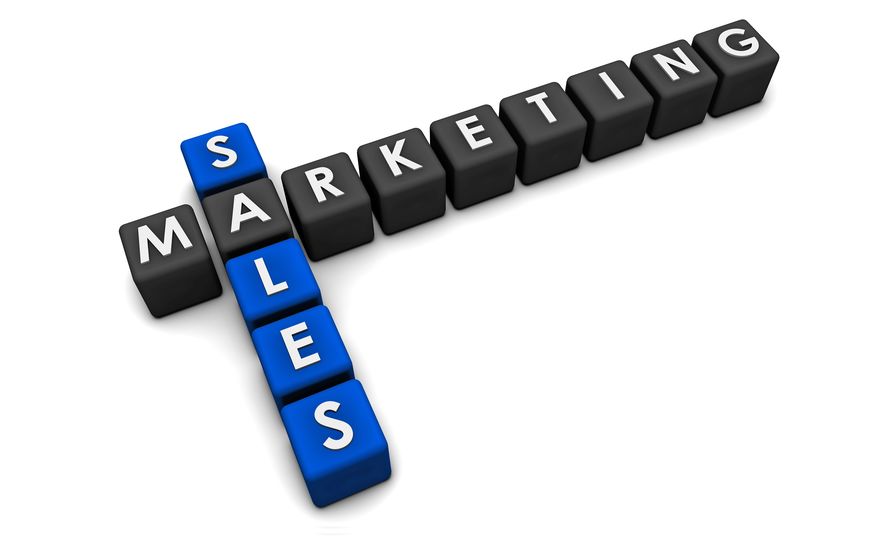
Business leaders have discussed the differences and similarities between sales and marketing for years. Too often, the conversation ends there, without any clear and actionable takeaways. Yet, there are many insights to be gained that can lead to better sales results, deeper understandings of one another’s needs, and more camaraderie, collaboration and engagement. This process is known as sales enablement.
Defining Sales Enablement
Technology developer Seismic defines sales enablement as “the strategic use of people, processes, and technology to improve sales productivity and increase revenue.” This definition encompasses any, and all, efforts made to impact the sales process. These initiatives can come from the sales and marketing teams. They also can come from other parts of the company, outsourced agencies and other stakeholders. Another definition comes from Hubspot which says that “sales enablement is the iterative process of providing your business’s sales team with the resources they need to close more deals. These resources can include content, tools, knowledge, and information to effectively sell your product or service to customers.”
Four Steps Toward Sales Enablement

To foster sales enablement, implement these four steps.
- Create content with customer-centric messaging that reinforces your brand. It’s an essential first step to develop the resources that resonate with prospects and therefore empower the sales team. This type of content should share valuable insights that appeal to your target audiences. Strike a balance between communicating your company’s mission and providing solutions to your prospects’ pain points through content such as white papers, case studies and bylined articles. Other useful content includes sales brochures, presentation decks, service and product catalogs and fee schedules.
- Build a content library. Assemble all sales support resources in an easy to access, easy to find folder, whether in the Cloud or on your own network. Make sure content is current and that salespeople know how to access and use it. Ensure your resources are distributed across departments and are reviewed regularly for brand consistency and relevancy in the marketplace.
- Use appropriate materials at different phases of the buyers’ journey. The right piece of content for a prospect varies depending on the prospect and stage in the buyer’s journey. Sometimes a sales brochure is appropriate for an introduction. Other times, a prospect might need a case study that demonstrates a specific solution or a success story from a similar company or industry.
- Collect data and communicate expertise to generate the most relevant and meaningful content. Staying on top of what your customers and prospects need is a full-time job for both sales and marketing teams. Combine forces to seek insights from the marketplace and communicate those across multiple levels and departments. Effective alignment comes down to communication and shared knowledge. According to SalesPOP!, “If teams collect and analyze data together, it will be easier for them to make decisions together as well. Some of these data could be sale cycle duration, size of targeted companies, social media engagements, ads responses, [or] numbers of repeat sales.”
Seeking Alignment
To generate the alignment required for sales enablement, sales and marketing must first recognize their individual roles. Sales is the activity that brings in the revenue. In this context, salespeople engage directly with customers and prospects, uncover needs, propose solutions and initiate a purchase decision. Marketing, on the other hand, is a holistic process designed to support the sales effort by increasing visibility, credibility and name recognition in the marketplace.
Marketing is about building brand awareness, creating compelling messaging and demonstrating value, thereby making the sales team’s job easier. Consistently communicating the ins and outs of these roles stimulates collaboration and facilitates increased sales. Danielle Moffat, director of intelligent sales and customer operations at Accenture Operations, explains, “In order to really align on the prerogative of growth, alignment must exist that recognizes and incents the joint success of the teams working collaboratively to drive growth. That means incentivizing shared priorities as opposed to siloed behavior.” By using collaboration to break down boundaries, companies can drive growth through sales enablement.
Uniting Sales and Marketing

Sales enablement isn’t just about boosting sales numbers, but rather about uniting forces to stimulate continued growth. Well-conceived, carefully designed and thoroughly implemented marketing programs that come with input from the sales team can help business development professionals become more confident and effective in their outreach initiatives. The combined forces have the power to accelerate business growth.
